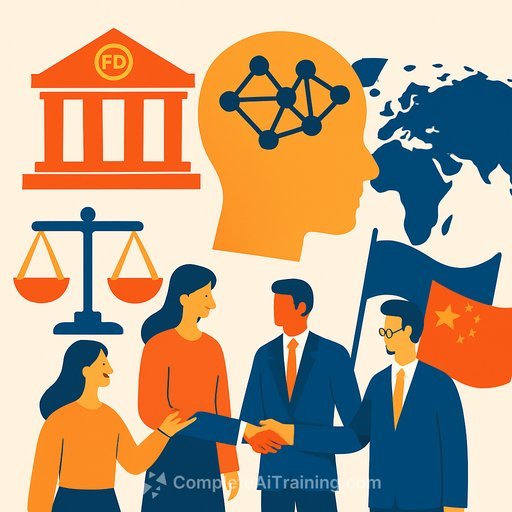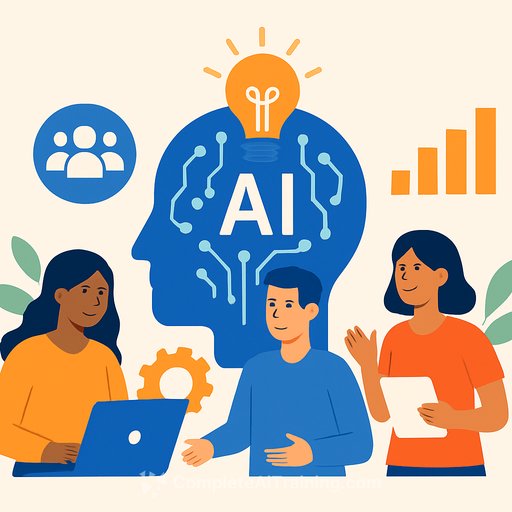Where science meets society: Responsible AI and Big Data innovation at GATE
Technology | 3rd October 2025
GATE integrates digital twins, advanced machine learning, and trusted data-sharing infrastructures to accelerate sustainable change across cities, health, and industry.
As the first dedicated Big Data and AI Centre of Excellence in Bulgaria and Eastern Europe, GATE is co-funded by the European Commission and the Bulgarian Government. It is a joint initiative of Sofia University St. Kliment Ohridski and Chalmers University of Technology and Chalmers Industrial Technologies, Sweden. The focus: build a data-driven smart society with practical impact.
GATE at a glance
GATE delivers research and innovation in Future Cities and Digital Health, and leads national efforts in trusted data spaces. As Bulgaria's hub of the International Data Spaces Association, GATE develops secure, sovereign, standards-based data-sharing environments that organisations can adopt with confidence.
The institute advances federated architectures, privacy-preserving ML, and decentralised approaches such as federated learning and knowledge distillation. It also blends ontologies, semantic tech, and policy constraints to create systems that reason over static and streaming data. In step with Europe's regulatory and ethical direction in AI, GATE supports practical adoption of compliance-ready, human-centric AI and contributes to the implementation of the EU AI Act.
International Data Spaces Association | EU AI Act (EUR-Lex)
Future Cities: a deployable city digital twin
The Future Cities domain builds a scalable city digital twin for planning, design, and service delivery. The pilot develops a high-quality 3D model of Sofia, semantically enriches it, and applies it for simulation, analysis, and visualisation-so teams can design, test, and iterate digitally before they build.
Digital twin concept and tech stack
The 3D model is generated from cadastral data-buildings, green spaces, relief, road networks-continuously enhanced with orthophotos and satellite imagery for higher detail. It adopts CityGML, extends with FIWARE Smart Data Models and custom schemas, and is visualised in an interactive Cesium-based globe.
GATE proposes a CityGML 3.0 Application Domain Extension for the Vegetation module that uses CityGML's hook mechanism and the Dynamizer module to model growth and management over time. Unified data types and code lists enable advanced studies of urban heat islands, vegetation dynamics, and environmental impact.
Use cases
- Urban planning and energy: City-scale solar radiation studies integrate 3D building geometry and remote sensing to guide PV placement, passive heating, cooling load management, and microclimate analysis in Sofia's mountainous context.
- Transport and safety: A micro-traffic simulation pipeline ingests LiDAR from the GATE City Living Lab, runs SUMO simulations, and applies ML (e.g., Random Forest) for reclassifying unrecognised objects and refining trajectories. The result: scalable, adaptable traffic management scenarios for multiple city settings.
The outcome is a practical digital twin approach that drives data-informed planning, safer mobility, and better urban services.
Digital Health: biomarkers to real-time alerting
In Digital Health, GATE targets early diagnosis, prognosis, and treatment support for neurological diseases. Teams apply CNNs, autoencoders, segmentation methods, and local data-driven insights to classify patients and estimate cognitive trajectories-already showing progress in early Alzheimer's detection and now extending to other hypersynchrony disorders.
By incorporating brain connectivity, the models move toward mechanistic insights and disease-specific parameter estimation across conditions. Work in online learning, personalisation, and adaptive systems aims to broaden applicability in real settings.
From clinic to home and city
GATE builds systems for real-time monitoring and alerting of hazardous events via remote optical sensors-detecting seizures, life-sign disruptions, and lethal syndromes such as SUDEP, SIDS, and central apnea. In collaboration with SEIN (Netherlands), a clinical-use motor seizure detection device is in final validation, while GATE develops a home-use version integrating AI personalisation with a patented optical tracking and PTZ control subsystem.
These capabilities integrate with telemedicine workflows and extend beyond health: the same sensing and ML stack adapts to real-time fall detection in public spaces, creating synergy with Future Cities. All algorithms and modules are designed to be modular for reuse across domains.
GATE Data Space Lab
As the national IDSA hub, GATE operates the Data Space Lab-a standards-compliant testbed for experimentation, demonstration, and training. It includes IDSA-certified components and a sandbox for building and validating data-sharing scenarios, with technical and legal training plus business model support to help teams move from pilots to production.
GATE Dataspace Connector
The GATE Dataspace Connector is the first in Eastern Europe with IDSA Assurance Level 1 Certification. It provides interoperability and secure exchange with strict data sovereignty, enabling usage policies, provenance tracking, and fine-grained access control. This foundation supports Bulgaria's first Urban Data Space across air quality, sustainable mobility, energy efficiency, and data-driven planning.
Federated software architectures and federated ML allow insights from distributed datasets without moving sensitive data. This improves prediction quality for traffic, pollution exposure, and energy demand while maintaining trust among public and private stakeholders.
The GATE Data Platform
GATE's platform is a private cloud environment combining GPUs, application servers, and advanced software accessible locally or remotely. It supports virtual machines, containers, app servers, and standalone services.
Four database systems handle SQL, JSON, RDF, and CityGML. A Cloudera Hadoop cluster supports offline and real-time Big Data processing. The stack follows DevOps, DataOps, AIOps, and MLOps practices, with tools for acquisition, transport, processing, storage, analysis, and interpretation.
Built-in capabilities include semantic integration, data enrichment, deep learning, reinforcement learning, and prompt engineering. The platform hosts services for large international projects such as DiverSea, which studies marine biodiversity dynamics from the Black Sea to the North Sea.
What this means for developers and data teams
- Adopt federated architectures to keep sensitive data in place while still training useful models.
- Model cities with standards like CityGML and extend with ADEs to bring domain logic into your twin.
- Use policy-driven data sharing with certified connectors to enforce usage control and provenance.
- Operationalise ML with MLOps and DataOps across mixed workloads: batch, streaming, and edge.
- Lean into online learning and personalisation for real-time health monitoring and smart city events.
- Build modular components to reuse models and pipelines across urban and health applications.
Funding: The Project "Big Data for Smart Society" (GATE) is funded by the Horizon 2020 Teaming programme and the Operational Programme "Research, Innovation and Digitalisation for Intelligent Transformation" 2021-2027, co-funded by the European Union.
Please note, this article will also appear in the 24th edition of our quarterly publication.
Upskilling your team for compliance-ready AI and MLops at scale? Explore practical courses at Complete AI Training.
Your membership also unlocks:






